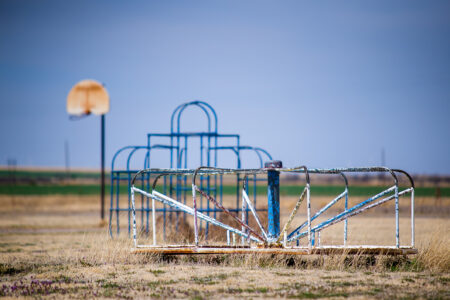Share On Social!
What happens when youth are given the opportunity to lead their classmates toward a healthier school environment? The results might just amaze you! Teens involved in the 20-20 Leadership program at JC Harmon High School, a 58% Latino school in Kansas City, Kan., learned about the county’s high obesity rates—and they decided to do something about it. They developed plans for a healthy hub at Harmon High and later came up with the win-for-all solution of developing an outdoor fitness trail on school grounds. Now the school has a half-mile fitness trail and students plan to continue enhancing fitness opportunities by installing outdoor exercise equipment along the trail.
EMERGENCE
Awareness: D’Angelo Hicks was a junior at Harmon High when he first joined 20/20 Leadership, a 10-15 month leadership training program for high school juniors and seniors, in fall 2012. Hicks was invited to join by Rick Malone, math teacher and 20/20 Leadership sponsor for Harmon High.
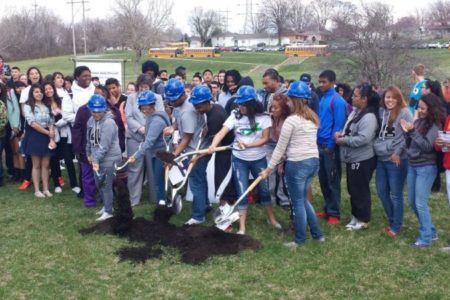
That same year, the 27% Latino county of Wyandotte, which includes Kansas City, was ranked 97th out of 100 counties in health outcomes.
According to Marilyn Alstrom, executive director of 20/20 Leadership, Kansas City’s leadership took notice of the county’s high obesity rates and decided to work toward better health.
“The mayor was talking about health as one of his focuses,” Alstrom said.
Learn: Through 20/20 Leadership, Hicks and several of his classmates got the opportunity to attend leadership-building sessions, visit city hall, hear from local leaders, engage in team-building exercises, and learn valuable skills for developing community-wide relationships.
It was during fall 2013 while working on a team project for the 20/20 Leadership program that Hicks and his fellow classmates at Harmon learned about the high obesity rates, lack of healthy food, and the lack of safe places to play, faced by the community.
“We didn’t know it was as bad as it was,” Hicks said.
Hicks also learned that students at Harmon High face several barriers to good health and learning.
Of the 1,180 students enrolled, about 92% were considered economically disadvantaged. The school also faced low attendance (88%) and graduation rates (66%) compared to the state averages of 95% and 85%, respectively, according to a 2014 Powerpoint presentation prepared by the 20/20 Leadership team.
“We all felt that [obesity and health] needed to be discussed, because in the area it’s pretty impoverished and it’s considered to be a food desert,” Hicks said.
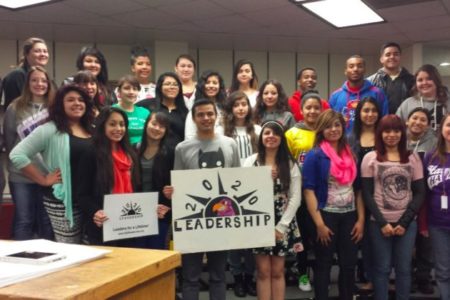
Frame Issue: While preparing for the 20/20 Leadership Olympic Competition, an event where students from different schools work on a community project and compete against each other for $500 in prize money, Hicks and his teammates discovered that between 2008-2009, Harmon’s 20/20 Leadership students had been awarded a $10,000 grant to fix the outdoor football/soccer field at their school.
Regrettably, after the class of 2009 graduated, no one followed up on plans to fix the field.
Still, according to Malone, this was an opportunity for the 20/20 students to help finance their community project.
The students had several great ideas for the competition: a new football turf field, a walking trail, an indoor soccer (or futsal) court, a basketball court, outdoor exercise equipment, and an outdoor classroom at their school.
The trail became a priority.
Not only would the trail help students get healthy, but Hicks said he and his teammates also believed a trail and outdoor classes would encourage students to come to school, thereby enhancing attendance and graduation rates.

Fortunately, with the school’s 10 acres of land, there was plenty of room to build on.
And they hoped the unused $10,000 grant could pave way for a larger Healthy Hub at Harmon High.
DEVELOPMENT
Education/Mobilization: Hicks and his classmates brought their ideas for a Harmon Healthy Hub, including a trail, to Malone and Alstrom, who offered their full support.
“They wanted to have a place to exercise, to socialize, to fun,” Malone said. “A place where the neighbors could come out and use the trail—that was one of the biggest things.”
Alstrom made it clear to this was a student-led project.
“We weren’t going to do anything unless they took complete ownership,” she said.
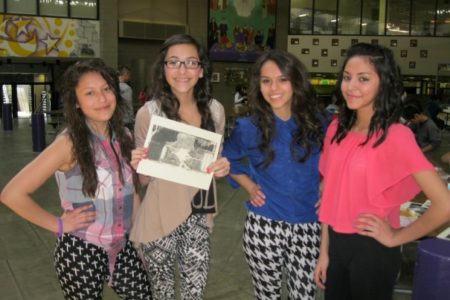
Next, the students reached out to school’s administrators, the district school board, and the greater student body, who all expressed support.
The students also twice met with the district superintendent, and they also met with the mayor.
At all meetings, students argued that the Harmon Healthy Hub would not only improve student health, but also school attendance and student discipline.
The trail might also increase goodwill from the community, increase school spirit and possibly even encourage students to boost their grades and test scores.
With tacit support, the 20/20 leadership team conducted a school-wide survey to see what features their classmates wanted. As an incentive for participating in the survey, the students gave away a tablet.
“We wanted people to be involved,” Hicks said. “We knew the success rate wouldn’t be good if [students] weren’t informed.”
Debate: At first, the students wanted to renovate the turf on the football and soccer field.
But they found out the district already was planning this renovation.
So a fitness trail, which the survey showed as a top priority among students, became the main goal.
ENACTMENT
Activation: The students contacted local architects to propose a fitness trail design.

“They were excited to work with us,” Malone said. “One architect was really excited because his daughter was going to be attending Harmon.”
The students described what they wanted to see, and the architects crafted a rendering of what the fitness trail might look like.
Then Hicks and his teammates were given an estimate of what it would cost to build their dream trail: $1 million for a trail plus amenities.
The students were not daunted. They decided to approach the trail project by building in phases.
Between January and February 2014, the students continued meeting with architects until Phase 1 plans were complete.
During that time they also prepared to present their work to the school board and potential funders.
Frame Policy: For Phase 1, the trail would include a half-mile concrete trail.
Phase 2 would promote trail usage and add these amenities:
• Outdoor Classroom
• School Monument/Signage
• Trail Lighting
• Exercise Stations
• Benches/Seating Berms
• Student Garden
• Spirit Walk
• Alumni Re-engagement
The Harmon 20/20 Leadership Team went about raising funds for Phase 1.
They raised $148,000 thanks to seed money from the unused $10,000 grant, help from Alstrom and Malone, and the support of their community. Local groups like the Sunflower Foundation, the Kansas Health Foundation, the Unified Government’s Parks and Recreation department and Kansas City Kansas Public Schools, provided the funds necessary for the trail.
Change: With architectural plans complete and $148,000 available, the students came to the school board and presented their final plans for a half-mile concrete trail at Harmon High.
“At this point they had presented their project so many times that they did a great job presenting at the board meeting,” Malone said. “It was pretty exciting.”
The school board voted to begin construction of the trail.
IMPLEMENTATION
Implementation: On April 8, 2014, trail construction began with a groundbreaking ceremony attended by the mayor and school board.
By May, the trail was complete—just in time for a unique event.
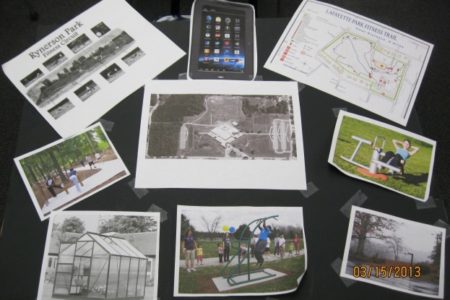
The students learned that a teacher at Harmon High was battling an illness, so they united to plan a 5K to raise money for her medical expenses—and to coincide with the district’s annual employee 5K event.
The 5K drew about 400 student and employee participants on May 10, 2014, Malone said.
“The response was pretty good,” Hicks said.
Equity: Now that the trail is complete, students are beginning to plan Phase 2, including the addition of fitness equipment and additional amenities throughout the trail.
“The students went out and talked to the PE teachers, to see what type of equipment they would like to see,” Malone said.
The outdoor fitness equipment would provide students the opportunity to use the trail during gym time.
Sustainability: According to Malone, the trail will last at least 30 years.
The district is responsible for maintaining the trail. However, it should require very little maintenance.
And the impact is starting to show already, Malone said.
Since the start of the trail project, Harmon High attendance rose from 88% to 93% between fall 2013 and spring 2014. For the 2014-2015 school year, Malone says 24 seniors and 21 juniors have already signed up for the 20/20 Leadership program at Harmon and students are already planning to plant a community garden by the trail.
By The Numbers
33
percent
of Latinos live within walking distance (<1 mile) of a park
This success story was produced by Salud America! with support from the Robert Wood Johnson Foundation.
The stories are intended for educational and informative purposes. References to specific policymakers, individuals, schools, policies, or companies have been included solely to advance these purposes and do not constitute an endorsement, sponsorship, or recommendation. Stories are based on and told by real community members and are the opinions and views of the individuals whose stories are told. Organization and activities described were not supported by Salud America! or the Robert Wood Johnson Foundation and do not necessarily represent the views of Salud America! or the Robert Wood Johnson Foundation.


